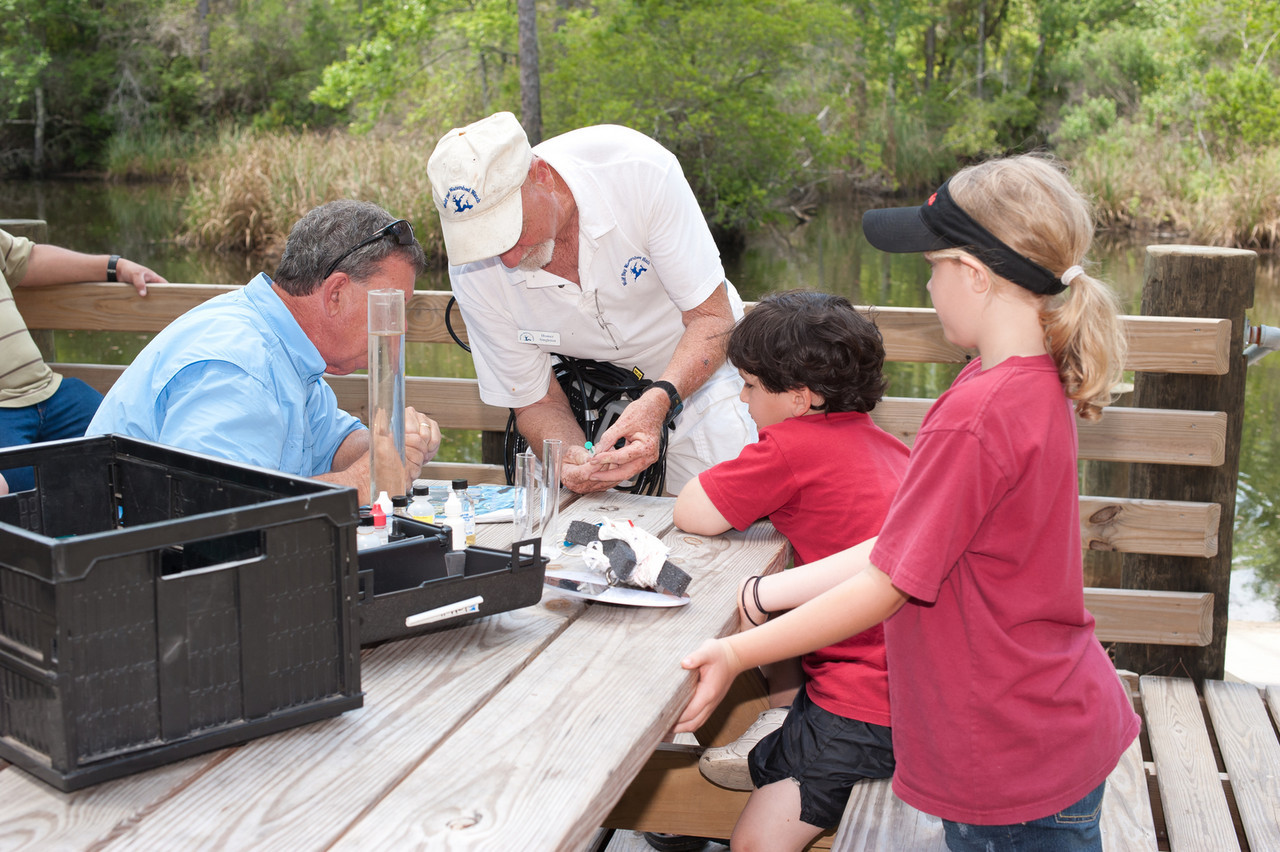Volunteer Water Quality Monitoring in Mobile and Baldwin Counties
Whether you catch fish for fun or for a living, swim for exercise or for leisure, kayak or powerboat, or just like to gaze at its beauty, as a community, coastal Alabama is intimately intertwined with its water resources. We depend on healthy water resources to sustain our environment, economy, and quality of life. Understanding the health of Mobile Bay’s estuarine waters is paramount to ensure the experiences and opportunities afforded to you remain intact and accessible for the next generation. One of the best ways to determine the condition of a waterbody is to conduct regular monitoring. However, when you consider the numerous waterways in coastal Alabama, along with budget constraints and other limitations placed on professionals and government agencies, routinely monitoring every river and stream seems daunting at best. The good news, however, is a productive and cost efficient way to collect comprehensive water quality data already exists, all it needs is you. In watersheds around Mobile Bay, citizens from all walks of life volunteer to become certified Alabama Water Watch (AWW) monitors and test sites monthly.
Alabama is fortunate to have AWW. Since 1992, AWW has worked to educate, train, and empower people statewide to monitor water quality. To date, they have more than 82,000 data records from 2,300 sites throughout Alabama. Their protocols are approved by the Environmental Protection Agency and include a robust Quality Assurance Plan. Trained AWW water quality monitors are able to test for basic water chemistry and/or for bacteria depending on their certification. Alabama Water Watch training is always free! Water chemistry training takes about six hours and bacteria training about two hours.
Two longstanding watershed groups, Dog River Clearwater Revival in Mobile County and Wolf Bay Watershed Watch in Baldwin County, are a wonderful example of how volunteer water quality monitors can make a difference in their communities. Collectively, these two groups have monitored more than 100 different sites over the past twenty years. Both groups not only monitor, but they use their data to advocate for their respective watersheds. Wolf Bay’s volunteer monitoring data was instrumental in having the watershed declared an Outstanding Alabama Water in 2007 (Alabama’s highest designation). Dog River uses volunteer data to document water quality impacts from urban runoff and sewage overflows. Other watersheds with active citizen monitoring efforts include Weeks Bay, D’Olive, Little Lagoon, and recently established Fowl River.

Currently, water quality monitors are needed as part of the comprehensive watershed planning for 31 priority watersheds in Mobile and Baldwin counties. Driven by science, these plans will guide future restoration and management decisions for decades to come. Citizen science has an important role in watershed planning. Each plan calls for water quality monitoring to track the success or failure of implemented planning strategies, or to determine where additional focus is needed. The importance of volunteer monitoring and the benefit of your involvement cannot be overstated. If you or someone you know is interested in a fun and meaningful science-based volunteer activity, consider becoming a local water quality monitor. You do not have to live on the water to participate. What it boils down to is we need you. The success of any volunteer water quality monitoring program is dependent on the volunteers who will offer their time to better our collective understanding of water quality.
To learn more about how you can become an AWW volunteer or to register for a workshop, visit www.alabamawaterwatch.org. If you or a group is interested in volunteering as a water quality monitor for the comprehensive watershed plans, contact MBNEP.




